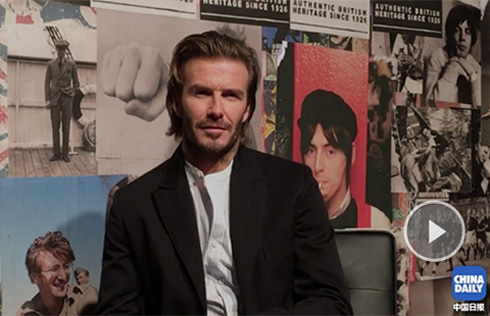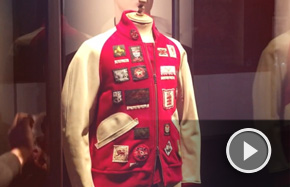Out of the dark room, into the light


New Zealand photographer Tom Hutchins recorded his impressions of China in 1956. Many of the previously unseen photos provide valuable insight into the transformation of a nation. D J Clark reports
New Zealand photographer Tom Hutchins spent four months in 1956 traveling through China on an exclusive assignment for Life Magazine. Few foreign journalists were permitted visas to enter the country at the time and his photographs form a unique insight into a China very much in transition.
Returning to New Zealand, he sent a handful of prints to be published, then stored them under his house.
Fifty years later, photographic historian John Turner discovered this rare archive and set about piecing together the collection, which Turner hopes to turn into a book and an exhibition in China.

According to Turner, Hutchins' China work is significant not only for its quality and scope, but also because his fly on the wall style provides a very different visual history to the Chinese photographers of the time.
In a talk given to journalism students at Beijing Foreign Studies University, Turner explains how Hutchins became interested in China.
"He had a long-time interest in China, his father was a waterside worker and a communist and Tom himself called himself a socialist. He grew up in Freeman's Bay, which was then the working class slum area and he had Chinese friends at school. He became very interested in the Chinese revolution."
During World War II, Hutchins refused to join the army and was jailed for a short period for being a conscientious objector. Later, while working first at the New Zealand Herald and Later at the Auckland Star he became well known for his coverage of social issues in the country, in particular a photo essay about the living conditions of the Maori.

On being granted a visa, he gave up his job at the Auckland Star and set off to Hong Kong, from where he entered the mainland by train. Over the next four months he photographed most of the major cities: Guangzhou, Shanghai, Beijing, Shenyang, Anshan and Changchun. He also traveled through the rural west from Xi'an to Xinjiang Uygur autonomous region, across the Gobi desert.
Photographing mainly in black and white, he liked to wander the streets documenting daily life. Highlights of the collection include images of the 8th National Congress of the Communist Party of China where he photographed former leaders Mao Zedong and Zhou Enlai, as well as some striking color slides of the cave art works in Dunhuang, Gansu province.
Jia Aimei, who was then a recent English graduate from Fudan University, was Hutchins' guide around Beijing.
"I met Tom in June 1956. I was a beginner and John was the first foreign photographer I worked with. At that time there were no tourists from Western countries. When I worked with him I was a bit nervous and also my English was not fluent. But he was very nice and very patient," Jia recalls.
Now 77 and living in Beijing, Jia retired after 20 years working for the China Travel Service and later as a professor at the China Academy of Social Sciences. Growing up in the early days of New China, Jia, like most young people of the time, believed that most Westerners would look down upon the country for its lack of resources and development.
"When we worked with foreigners and photographers we were concerned that they would take pictures of what we thought was the backward part of China. For instance, if they took a picture of bound feet. In the 50s we still had bound feet women," Jia says.
Looking back, Jia laughs about her attitude toward Westerners at the time, as she describes her suspicions about the photographer and her concern over what Hutchins photographed.
Fortunately, Hutchins was more interested in taking his pictures of ordinary Chinese people's lives in an "open and neutral" way, as Turner put it.
Without being given a reason, Hutchins was asked to leave China two months before his visa expired and he returned to New Zealand. The work was published as an eight-page spread titled Red China on the March, in the January 1957 issue of Life Magazine.
Encouraged by the reaction the article received, he approached book publishers in Europe and the United States in the hope of printing a much larger selection of the pictures but found growing negativity toward China, so he gave up on the idea, packed the photographs up and moved onto other projects at home.
John Turner, who had taught photography with Hutchins at the University of Auckland, was aware of the pictures but only got round to seeing them on a visit to Hutchins' house 50 years later.
"We found out the stuff from China was under his house in the basement, so we dragged out these boxes and suitcases and found to our horror that 90 percent of the material, which included photographs, some slides, newspaper clippings from China, his manuscript and caption lists, had rotted beyond repair. Fortunately he had several different versions so by combining them I was able to create a composite view of the essay," Turner says.
Hutchins only revealed three years later that the negatives also existed, stored in a back room in his house.

With the help of Auckland University, Turner recruited students to make detailed notes on the 300 rolls of films and 400 color slides Hutchins had shot in China. Making new proof sheets from the negatives, Turner spent long sessions with Hutchins interviewing him about his experience and asking him to identify what he thought were his most important pictures.
Hutchins died in 2007, bringing to an end the research.
"He pushed the limits, he was gregarious he was curious, he really liked people so he would be out there all the time photographing," Turner reflects.
Turner has compiled the collection and made two visits to China to speak to publishers and galleries about its publication in China. He found overwhelming interest but has hit a problem.
Since Hutchins' death, his photographic archive has passed to trustees who, worried about copyright infringement, have stopped the pictures from being published or exhibited in China.
"These are unseen pictures. Thirty odd have been published and nearly 10,000 have never been seen. But its crazy not to bring the work to China, they're pictures of the Chinese people and they are the ones who should see them. Some of the people in the pictures are still alive. It's their history and their families, so it's ludicrous to have such a significant collection stuck away in Auckland, New Zealand," Turner fumes.
After some persuasion the trustees have agreed for the pictures to be published in Europe and Turner is now searching for a publisher. "Even if I have to publish them myself I am determined to get the pictures out into the world."






















